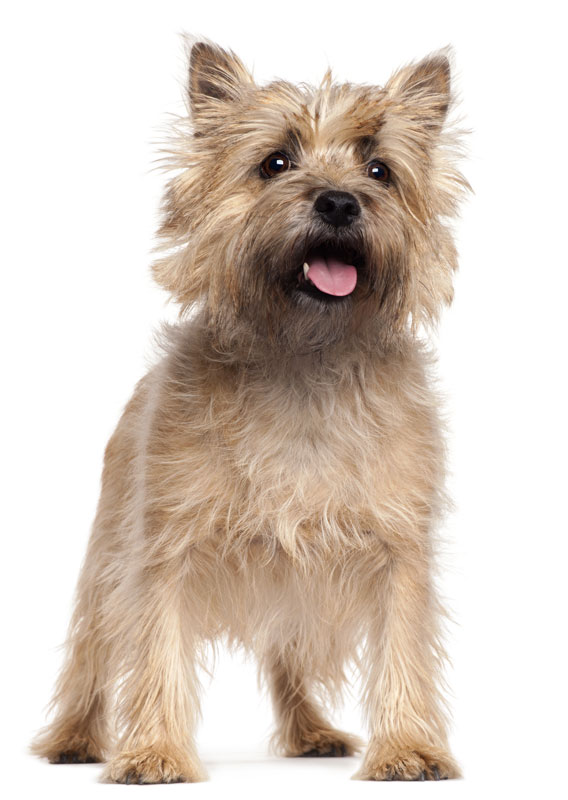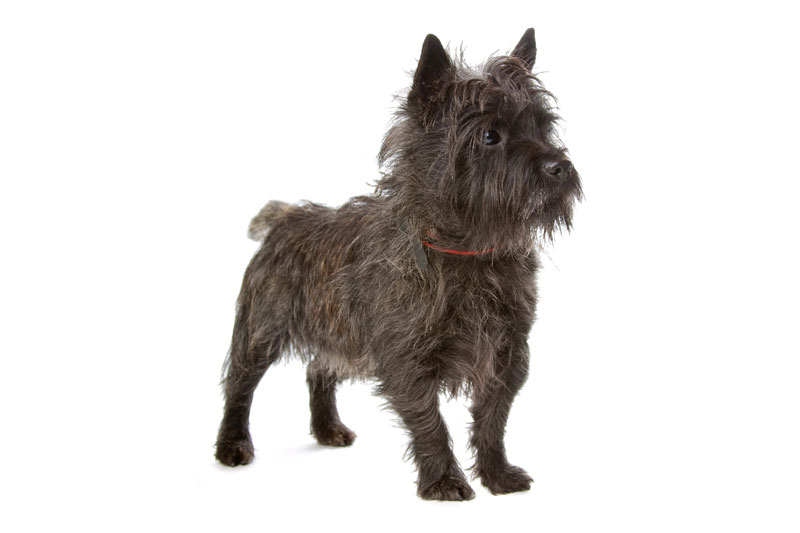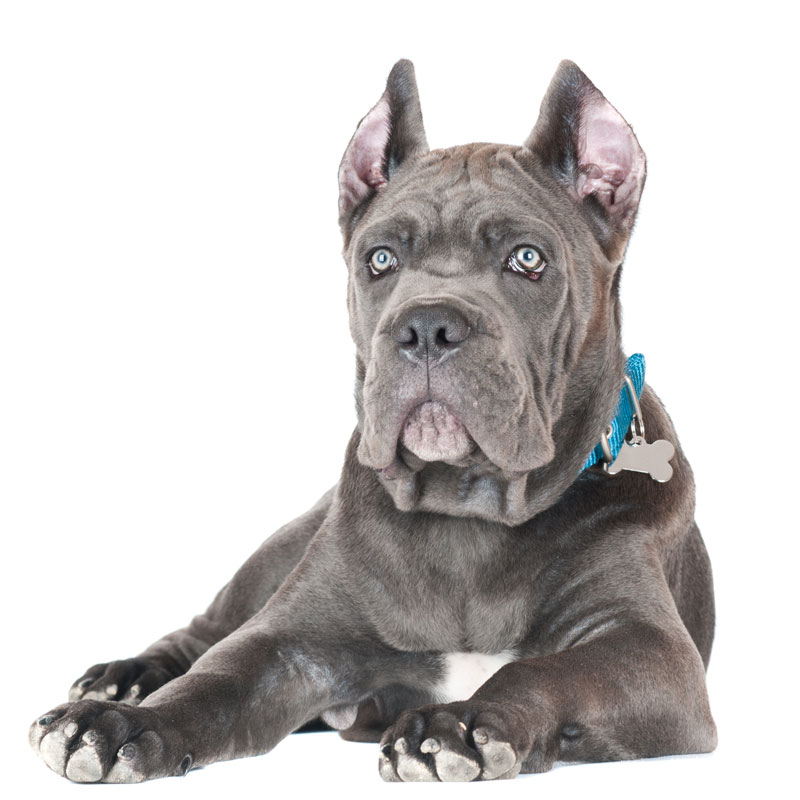Super User
Burgos Pointer
A Burgos Pointer is a breed of dog native to Spain. Originating from Castile (historical region), especially in the province of Burgos, this hardy breed is used for hunting and has some outstanding features for small game.
History and origin of the breed
It is an ancient breed dating back to the 1500s and originating in the Castile (historical region), which is very widespread. It is very probable that the breed participated in the creation of other races of this group.The breed is believed to have descended from a mix of the Sabueso Español and the Pachon Navarra (also known as the Perros de Punta Ibericos).
Burmese
The Burmese (Thai: ทองแดง (ศุภลักษณ์) RTGS: Thong Daeng, meaning copper colour) is a breed of domestic cat.
Most modern Burmese are descendants of one female cat called Wong Mau, which was brought from Burma to America in 1930 and bred with American Siamese. From there, unusually among pedigreed domestic cats, American and British breeders developed distinctly different Burmese breed standards. Most modern cat registries do not formally recognize the two as separate breeds, but those that do refer to the British type as the European Burmese.
Originally, all Burmese cats were dark brown (sable), but are now available in a wide variety of colours; formal recognition of these also varies by standard. Both versions of the breed are known for their uniquely social and playful temperament and persistent vocalisation.
History
The earliest records of a type resembling the modern Burmese come from Thailand, then known as Siam. A series of 17 illustrated poems written in Siam during the period of the Ayutthaya mention three types of cat which appear to correspond to known breeds. These were the Vichien Mat Siamese, the Si-Sawat (Korat), and the Thong Daeng (Copper, now known as Burmese). These cats are thought to have remained in Thailand until it was invaded by the Burmese in the 18th century; returning soldiers may have taken the temple cats with them back to Burma.
In 1871, Harrison Weir organised a cat show at the Crystal Palace. A pair of Siamese cats were on display that closely resembled modern American Burmese cats in build, thus probably similar to the modern Tonkinese breed. The first attempt to deliberately develop the Burmese in the late 19th century in Britain resulted in what were known as Chocolate Siamese rather than a breed in their own right; this view persisted for many years, encouraging cross-breeding between Burmese and Siamese in an attempt to more closely conform to the Siamese build. The breed thus slowly died out in Britain.
Dr. Joseph Cheesman Thompson imported Wong Mau, a brown female cat, into San Francisco in 1930. Dr Thompson considered the cat's build to be sufficiently different from the Siamese to still have potential as a fully separate breed. Wong Mau was bred with Tai Mau, a sealpoint Siamese, and then bred with her son to produce dark brown kittens that became the foundation of a new, distinctive strain of Burmese. In 1936, the Cat Fanciers' Association (CFA) granted the breed formal recognition. However, due to continued extensive outcrossing with Siamese cats to increase the population, the original type was overwhelmed, and the CFA suspended breed recognition a decade later.Attempts by various American breeders to refine the unique Burmese standard persisted, however, and in 1954, the CFA lifted the suspension permanently.In 1958, the United Burmese Cat Fanciers (UBCF) compiled an American judging standard which has remained essentially unchanged since its adoption.
Meanwhile, in the UK, interest in the breed was reviving. The cats which composed the new British breeding program were of a variety of builds, including some imported from America. By 1952, three true generations had been produced in Britain and the breed was recognized by the United Kingdom's Governing Council of the Cat Fancy (GCCF). Until the late 1960s, the gene pool in Britain remained very small, with most Burmese being descended from 6 initial imports and a Burmese/Chinese hybrid from Singapore. In 1969, more were brought over from Canada, and the gene pool was widened. From the 1950s onwards, countries in the Commonwealth and Europe started importing British Burmese; as a result, most countries have based their standard on the British model.
Currently, the two versions of the breed are kept strictly distinct genetically. British Burmese (also known as "traditional") were declassed as a breed by the CFA in the 1980s. The GCCF, meanwhile, has banned the registration of all Burmese imported from America in order to preserve the "traditional" bloodlines.Most modern cat registries do not formally recognize these dual standards as representing separate breeds, but those that do refer to the British type as the European Burmese. Recently, the International Cat Association (TICA) and CFA clubs have started using the American breed standard at select shows in Europe.
During the early period of breed development, it became clear that Wong Mau herself was genetically a hybrid between a Siamese and Burmese type. This early hybrid type was later developed as a separate breed, known today as the Tonkinese. Burmese cats have also been instrumental in the development of the Bombay and the Burmilla, among others.
Health
The British Burmese is predisposed to Diabetes mellitus.The incidence of flat-chested kitten syndrome was at one time believed to be particularly prevalent in the Burmese breed, but recent studies have cast some doubt on this hypothesis. A study funded by the UK Burmese Cat Club in 1980 was inconclusive.The breed has an average lifespan of 10 to 17 years.
Certain UK bloodlines suffer from an acute teething disorder in young kittens, where the eruption of the second teeth causes extreme discomfort and the young cat tears at its face to try to alleviate the pain. Veterinary intervention is not useful, since it is the eruption of the new teeth in the jaw that causes the problem; these cannot be removed until they have erupted, by which time the problem ceases. Apart from scarring caused by the self-mutilation, the cat seems to recover completely.
Hypokalaemia, a genetic disease which is characterised by low serum potassium levels, has also been seen in the British Burmese and can similarly be traced to certain bloodlines. The gene is recessive, and both parents must carry it for the kittens to develop the problem. A carrier mated to a non-carrier may pass the problem on unnoticed for several generations. Clinical signs include skeletal muscle weakness, which is often episodic in nature and either affects the whole cat or is localised to the neck muscles. As a consequence the cat can have difficulty in walking and holding their head correctly. Hypokalaemic cats can usually lead a normal life if they get the correct potassium supplement. Onset of symptoms often occurs around puberty and many may never experience another attack. A DNA test is now available to identify cats affected by or carrying this recessive gene.
Burmilla
The Burmilla is a breed of domestic cat which originated in the United Kingdom in 1981. It is a cross between the Chinchilla Persian and Burmese (cat) breeds. Standards were produced in 1984, and the breed gained championship status in the United Kingdom in the 1990s.
Cairn Terrier
The Cairn Terrier is one of the oldest of the terrier dog breeds originating in the Scotland Scottish Highlands and recognized as one of Scotland's earliest working dogs. The breed is commonly used for hunting and burrowing prey among the cairns.Although the breed had existed long before, the name Cairn Terrier was a compromise suggestion after the breed was originally brought to official shows in the United Kingdom in 1909 under the name Short-haired Skye terriers. This name was not acceptable to The Kennel Club due to opposition from Skye Terrier breeders, and the name Cairn Terrier was suggested as an alternative. They are usually left-pawed, which has been shown in dogs to correlate to superior performance in tasks related to scent. Cairn Terriers are ratters.
History
Cairn originated in the Highlands of Scotland and the Isle of Skye, initially grouped in the "Skye Terrier" class alongside the Scottish and West Highland White Terriers. In the early 1900s, the three breeds began to be bred separately. The breed was given the name cairn, because the breed's function was to chase quarry from the cairns in the Scottish highlands.
Health
These dogs are generally healthy and live on average about 12 to 17 years. Yet breeders, owners and veterinarians have identified several health problems that are significant for Cairns. Some of these diseases are hereditary while others occur as a result of non-specific factors (i.e. infections, toxins, injuries or advanced age).Some of the more common hereditary health problems found in the Cairn are:
*Cataracts
*Ocular Melanosis
*Progressive retinal atrophy
*Corneal dystrophies in dogs
*Krabbe disease (Globoid cell leukodystrophy)
*Hip dysplasia (canine)
*Legg-Calvé-Perthes syndrome
*Craniomandibular osteopathy (Lion Jaw)
*Von Willebrand disease
*Hypothyroidism
*Portosystemic shunt
*Luxating patella
*Entropion
*Soft Tissue Sarcoma (STS)
Currently, the along with the maintain an open registry for Cairn Terriers in hopes of reducing the occurrence of hereditary diseases within the breed. Breeders voluntarily submit their dogs' test results for research purpose, as well as for use by individuals who seek to make sound breeding decisions.
Canaan Dog
Canaan dog is a breed of pariah dog recognized as Israel’s national breed. It may have existed in the eastern Mediterranean seaboard for millennia, as referenced in ancient carvings and drawings. There are 2,000 to 3,000 Canaan dogs across the world, mostly in Europe and North America.In the Sinai Desert, a rock carving, from the first to third century AD, depicts a dog that in size and shape appears to be a Canaan type dog.In Ashkelon, a graveyard was discovered, believed to be Phoenician from the middle of the fifth century BC. It contained 700 dogs, all carefully buried in the same position, on their sides with legs flexed and tail tucked in around the hind legs. According to the archaeologists, there was a strong similarity between these dogs and the "Bedouin shepherd dogs" or the Canaan dog. A sarcophagus dated from the end of the fourth century BC, was found in Sidon lebanon, on which Alexander the Great and the King of Sidon are painted hunting a lion with a hunting dog similar in build to the dogs of Ashkelon, and similar in appearance to the Canaan dog.They survived this way until the 1930s, when Dr. Rudolphina Menzel came up with the idea to use these intelligent scavenger dogs mainly found in the desert, as guard dogs for the scattered Jewish settlements. Menzel was asked by the Haganah to help them build up a service dog organization (later to become Unit Oketz). She captured and acquired wild and semi-wild Canaan dogs. She worked with semi-free and free-living dogs of a specific type, luring them into her camp and gaining their trust. She also captured litters of puppies, finding them remarkably adaptable to domestication. The first successful adult she called Dugma (meaning example). Dr. Menzel found the dogs highly adaptable, trainable, and easy to domesticate. It took her about six months to capture Dugma, and within a few weeks she was able to take him into town and on buses.She began a breeding program in 1934, providing working dogs for the military and she gave pups to be pets and home guard dogs. She initiated a selective breeding program to produce the breed known today as the Canaan dog.In 1949 Menzel founded The Institute for Orientation and Mobility of the Blind, and in 1953, she started to train Canaan dogs as guide dogs for the blind. Although she was able to train several dogs, she found that the breed was too independent and too small for general guide dog use, although some of her dogs were used successfully by children.Her breeding program was concentrated with the Institute, where a foundation of kennel-raised Canaan dogs was established, carrying the name "B'nei Habitachon". She later supplied breeding stock to Shaar Hagai Kennels which continued in the breeding of the Canaan dog. After her death in 1973, Shaar Hagai Kennels, managed by Dr. Dvora Ben Shaul and Myrna Shiboleth, continued the breeding program according to her instructions. In addition, a controlled collection of dogs of the original type was continued, primarily from the Bedouin of the Negev.Collection of wild Canaan dogs has become very difficult. Many of the Canaan dogs living in the open were destroyed by the Israeli government in the fight against rabies. The spread of the human population into areas that were formerly isolated, along with their pet dogs, has resulted in the loss of the natural habitat of the Canaan. Even the majority of Bedouin dogs today, other than those of tribes still living a traditional and isolated life style, are mixed with other breeds, Myrna Shiboleth visits the Negev regularly, looking for good specimens living by the Bedouin camps, that she can breed with her dogs and use to strengthen the gene pool., and in the last few years, several excellent dogs have been found and brought into the breeding group.
Health
In general, the Canaan dog does not suffer from known hereditary problems. Although the breed is one of the healthiest, George A. Padgett, DVM, listed diseases that have been seen, at one time or another, in the Canaan dog: hypothyroidism, epilepsy, progressive retinal atrophy (PRA), cryptorchidism, Hip dysplasia (canine), elbow dysplasia, luxating patella, and osteochondritis dissecans (OCD).
Canadian Eskimo Dog
Other names include qimmiq or qimmit. Although once used as the preferred method of transportation by Inuit in the Northern Canada, by the 1960s traditional working dog teams became increasingly rare in the North. Contributing factors to the breed's decline include the increasing popularity of snowmobiles for transportation and the spread of infectious canine diseases. Controversy surrounds the intentional destruction of a debated number of Inuit sled dogs between 1950 and 1970 by The Royal Canadian Mounted Police as well as recent efforts to increase the breed's population.
Cane Corso
The Cane Corso is a large Italian breed of dog, for years valued highly in Italy as a companion, Guard dog and hunter.
History
The Cane Corso is a descendant of the canis pugnax, dogs used by the Romans in warfare. Its name derives from cane da corso, an old term for those catch dogs used in rural activities (for cattle and swine; boar hunting, and bear fighting) as distinct from cane da camera which indicates the catch dog kept as a bodyguard. In the recent past, its distribution was limited to some districts of Southern Italy, especially in Basilicata, Campania and Puglia.
The Cane Corso is a catch dog used with cattle and swine, and also in wild boar hunts. Cane Corso were used to guard property, livestock and families and some continue to be used for this purpose today. Historically it has also been used by night watchmen, keepers, and, in the past, by carters as a drover. In the more distant past this breed was common all over Italy as an ample iconography and historiography testify.
As life changed in the southern Italian rural farms in the 20th century, the Corso began to become rare. A group of enthusiasts began recovery activities designed to bring the dog back from near extinction in the late 1970s. By 1994, the breed was fully accepted by the Italian Kennel Club (ENCI) as the 14th Italian breed of dog. The FCI provisionally accepted the Corso in 1997, and ten years later was fully recognised internationally. In the US, the American Kennel Club first recognized the Cane Corso in 2010. The popularity of the breed continues to grow, ranking in 50th place in the United States in 2013, a jump from 60th place in 2012.
Cão da Serra de Aires
The Cão da Serra de Aires (FCI no. 93) is a medium sized breed of dog of the Herding dog type, and is one of the indigenous regional dogs of Portugal. Called the Portuguese Sheepdog in English language, the original name refers to the Serra de Aires, a mountain near Monforte in the Aentejo region, often mistaken winth the "Serra d'Aire" a range of hills or mountains marking the boundary between Ribatejo and Oeste Subregion, north of the Tagus river. The breed is nicknamed the "cão macaco" (monkey dog, referring to the Macaque) for its furry face and lively attitude.
Cão de Castro Laboreiro
The Cão de Castro Laboreiro or Dog from Castro Laboreiro or Portuguese Cattle Dog or Portuguese Watch Dog, is a dog breed of the livestock guardian dog Dog type originating from Castro Laboreiro in the northern mountains of Portugal.
Cão Fila de São Miguel
The Cão Fila de São Miguel (frequently translated into English as the São Miguel Cattle Dog or Cattle Dog of São Miguel Island, but other names, such as Azores Cattle Dog, may be used) is a dog breed of molosser Dog type originating on São Miguel Island in the Azores, an island chain which is one of the autonomous regions of Portugal. The breed was originally used for working with cattle.





